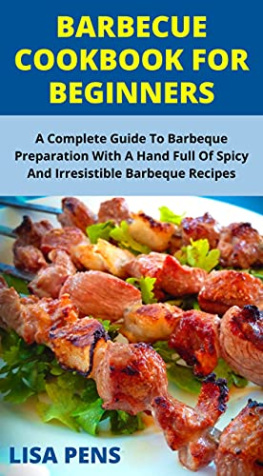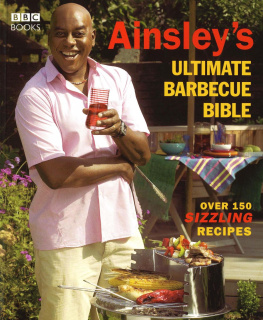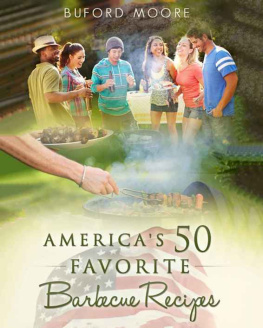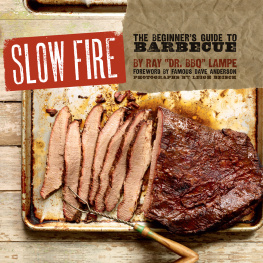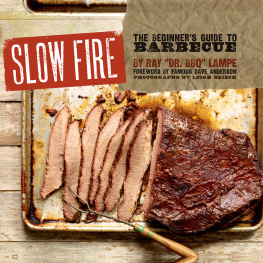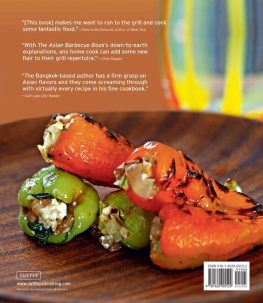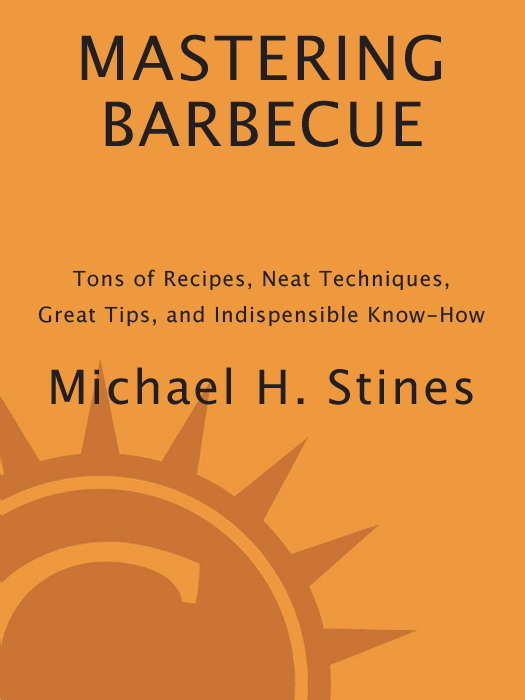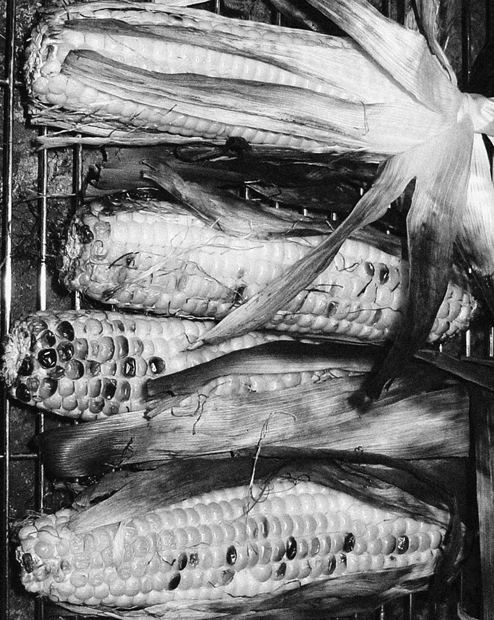Copyright 2005 by Michael H. Stines
All rights reserved. Published in the United States by Ten Speed Press, an imprint
of the Crown Publishing Group, a division of Random House, Inc., New York.
www.crownpublishing.com
www.tenspeed.com
Ten Speed Press and the Ten Speed Press colophon are registered trademarks of
Random House, Inc.
Previously published as Mastering the BBQ
Library of Congress Cataloging-in-Publication Data on file with the publisher.
eISBN: 978-1-60774-456-6
v3.1

MASTERING BARBECUE IS DEDICATED
TO THE VERY SPECIAL WOMEN IN MY LIFE ,
my daughters
MICHELLE&DANIELLE

CONTENTS

Cooking should be fun , whether you do it on top of a stove, in a professional kitchen, or in your backyard. An outdoor grill or offset smoker can even be an extension of your kitchen because everything you do inside, you can do outside. All it takes is practice, patience, and more practice. It also helps to have understanding friends and family members who will appreciate your efforts even if your early attempts arent quite contest-worthy.
Created over more than a decade with generous contributions from both professional chefs and amateur enthusiasts, Mastering Barbecue was written to coach, encourage, and guide the neophyte backyard cook into preparing great barbecue while getting comfortable with grilling and smoking tools and techniques. Seasoned barbecuers will find recipes, insider info, and regional style tips to enhance and improve their barbecue and grilling sessions.
Fresh ingredients are the foundation for all good cooking, whether youre preparing a formal sit-down dinner with seven courses or a backyard cookout with burgers and hot dogs. Use the information and suggestions in this book to develop your own barbecue and grilling favorites. Feel free to adapt the recipes to your taste buds and tolerance for heat. Remember, you can always add more spice and heat but its nearly impossible to tame a fire-breathing rub or sauce once its on the food. (For a breakdown on the most commonly used varieties of chile peppers and their respective heat and flavor characteristics, see .)

Standard Stand-bys
Salt When a recipe calls for salt, use a coarse kosher or sea salt. Coarse kosher salt has larger grains and a less intense flavor than table salt that is better suited for grilling and barbecue. If you use table salt, decrease the amount by about a third. Never use table salt for brining because the iodine content will ruin the food.
Pepper If possible, use only freshly ground peppercorns. Pepper deteriorates quickly once its been ground. So invest in a good pepper mill or spice grinder and prepare ground or cracked pepper as needed.
Herbs and spices Best when fresh although dried can be substituted, if necessary. The ratio is 1 tablespoon of fresh herbs is equal to 1 teaspoon of dried. In recipes calling for cilantro, use the fresh herb only as the dried has a totally different flavor.
Horseradish Use freshly grated when possible, otherwise, substitute well-drained prepared horseradish in an equal measurement. Be sure to add it at the end of the cooking process as cooking will minimize the flavor.
Butter Use unsalted butter unless otherwise specified. Its easier to control the salt content and ultimate flavor of foods and sauces with unsalted butter than with salted. If salted butter is used, decrease any additional salt by to teaspoon. Remember, its easy to add, difficult to remove.
Paprika The two basic types are sweet or hot. Experiment and discover the difference. Paprika should be added with fat, such as when sauting, to release its full flavor.
Chile powder vs. chili powder Heres the difference: Chile powder, with an e, is pure ground ancho chile (dried poblano chile). Chili powder, with an i, is a combination of spices, usually including chile powder, cumin, oregano, and garlic. Chili also refers to the traditional Bowl of Red Texas chili made with chunks of beef, beef stock, and spices. Chili con carne is Texas chili served with beans. (Real chili comes with beans on the side.)
Commercial sauces Several recipes in this book call for Tabasco sauce or other Louisiana-style or cayenne pepper-based hot sauces. Commercial hot sauces vary in taste and range in heat from mild to nearly unbearable, so substitution is not always a good idea. Other recipes call for a brand-specific sauce, mustard, or seasoning, such as Tennessee Gourmet Apple & Spice Sauce made by Tennessee Gourmet or Bellycheer Jalapeo Pepper Sauce made by Porkys Gourmet Foods. In these instances, use the specified product the first time you try a recipe. (If not available locally, see the Resources section on .) Then allow your creativity to take over and experiment with different commercial or homemade sauces for different tastes and burn factors. Try them and have your food develop an attitude!
Standard Stand-ins
If you dont have a specific ingredient called for in a recipe, dont worry! Feel free to experiment. Thats what makes cooking fun. Here are some suggestions for substitute ingredients:
| INGREDIENT | IF YOU DONT HAVE | USE |
| Arrowroot | 1 tablespoon arrowroot | 1 tablespoon cornstarch |
| Fresh herbs | 1 tablespoon fresh herbs | 1 teaspoon dried herbs |
| Garlic | 1 medium clove garlic | teaspoon garlic powder |
| Ginger | 1 teaspoon fresh ginger | teaspoon ground ginger |
| Horseradish | 1 teaspoons freshly grated | 1 tablespoon prepared |
| Italian seasoning | 1 teaspoon Italian seasoning | teaspoon each: oregano, marjoram, and basil, plus teaspoon sage |
| Mustard | 1 tablespoon prepared mustard | teaspoon ground mustard plus 2 teaspoons vinegar |



